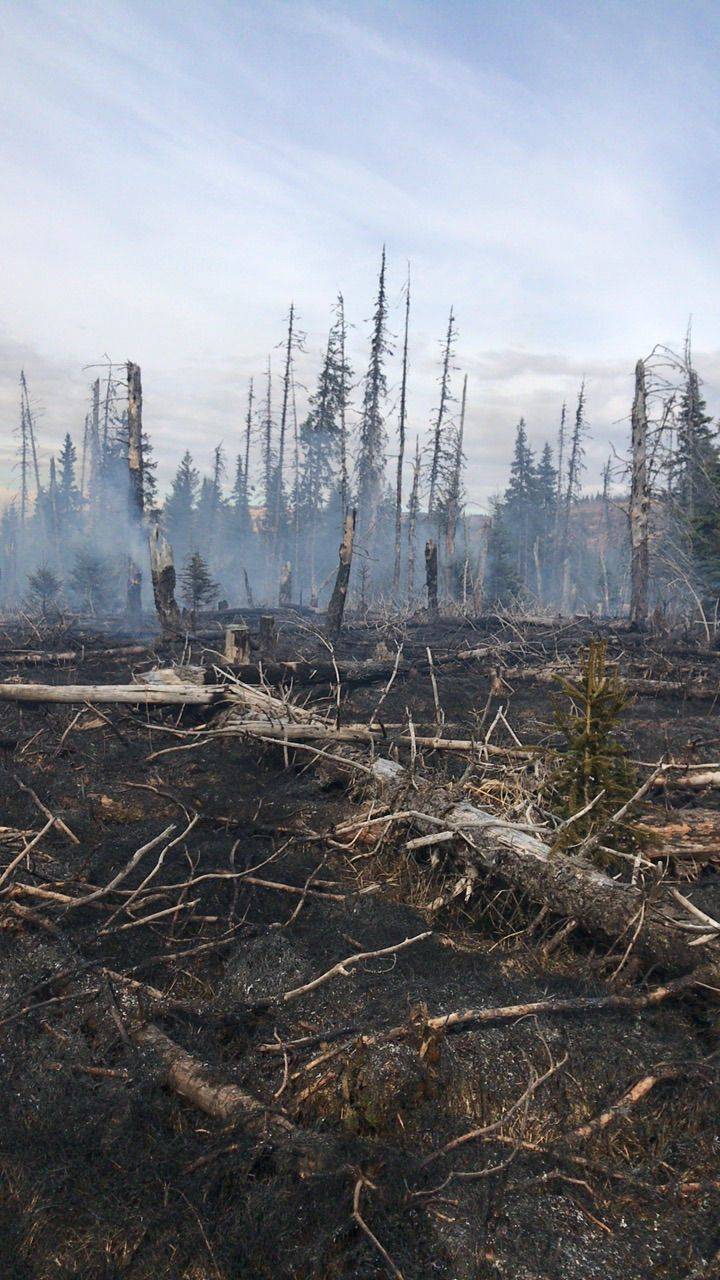Back-to-back wildfires kept emergency response teams busy on the southern peninsula Monday.
Firefighters were called out to the scene of a 3.5-acre wildfire along Misty Lane near Anchor Point at around 1:40 p.m. Monday, only to be deployed to a second fire in Nikolaevsk a few hours later.
Multiple agencies, including the Division of Forestry, Ninilchik Fire Department, Kachemak Emergency Services and Anchor Point Fire, responded. Kenai Peninsula Borough Office of Emergency Management monitored the fires and stayed in contact with fire agencies, but did not have to mobilize any resources, Emergency Manager Dan Nelson said.
Emergency management provides support if residents need to evacuate or take shelter due to a natural disaster.
Fed by dry grass and trees killed by spruce bark beetles, the Nikolaevsk fire spread across 11 acres of wildland and threatened several nearby structures.
Fire crews used a helicopter to drop multiple loads of water, and an air tanker dropped flame retardant on the edge of the fire closest to threatened homes. No damages were reported.
Alaska State Troopers said a Nikolaevsk man impeded the fire trucks responding to the fire. Troopers said Derek Jokay-Szilagyi, 45, laid down in the middle of the road, blocking a fire truck and crew. Troopers arrested Jokay-Szilagyi and charged him with disorderly conduct and reckless endangerment.
One engine and a five-person initial attack squad stayed on the scene of the Nikolaevsk fire overnight. A 20-person Yukon Type 2 Initial Attack Crew worked Tuesday to make sure fire in heavier fuel from downed trees was extinguished.
The Nikolaevsk fire was considered contained but not controlled Tuesday afternoon, Tim Mowry, public information officer for the Alaska Division of Forestry. Mowry said he hoped to have the fire controlled by the end of the shift Tuesday night.
Crews inspecting the site of the Misty Lane fire found no heat or smoke, and the fire was placed on “monitor” status, Mowry said.
“Both fires yesterday illustrate how dry conditions currently are on the Kenai Peninsula. The snow has been gone for quite a while and without any rain, the grasses and other fine fuels have dried out and are very receptive to ignition,” he said.
The causes of the fires are still being investigated.
May and June are typically the busiest time for wildfires due to the availability of fuel from dry grass, Hans Rinke, area forester with the Division of Forestry said. Rinke estimated there have been about nine or 10 fires so far this season.
Although there have been few hot days associated with high fire danger, high winds have dried out grasses — providing fuel for dangerous wildfires, Darren Finley, prevention officer for the Kenai-Kodiak region, said.
“It’s a little bit of deceptive this year — most people think of high fire dangers with really nice weather,” he said. “This year we’re getting a ton of wind, but not a lot of rain associated with wind. It dries out grass really quickly.”
Finley emphasized the importance of obtaining a burn permit and following all burn guidelines before starting any outdoor fires.
Permits are available online at forestry.alaska.gov/burn.
Reach Erin Thompson at ethompson@peninsulaclarion.com. Michael Armstrong contributed reporting. Reach him at marmstrong@homernews.com.


